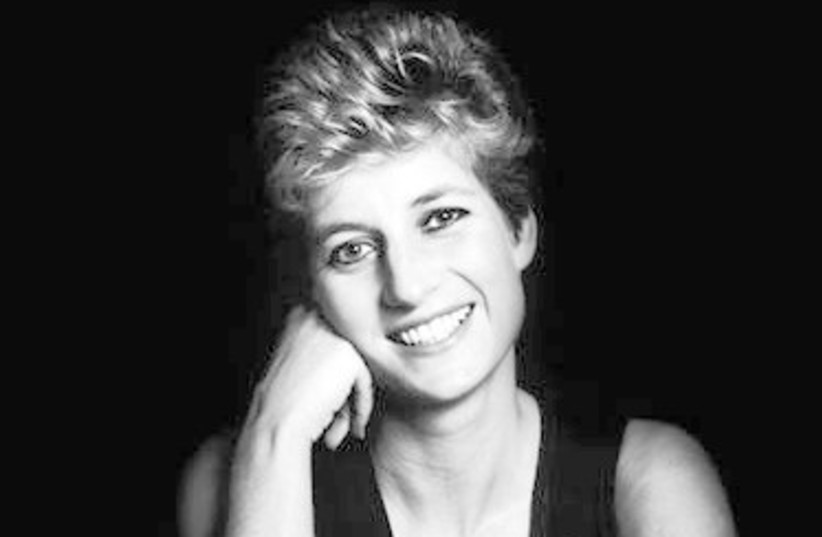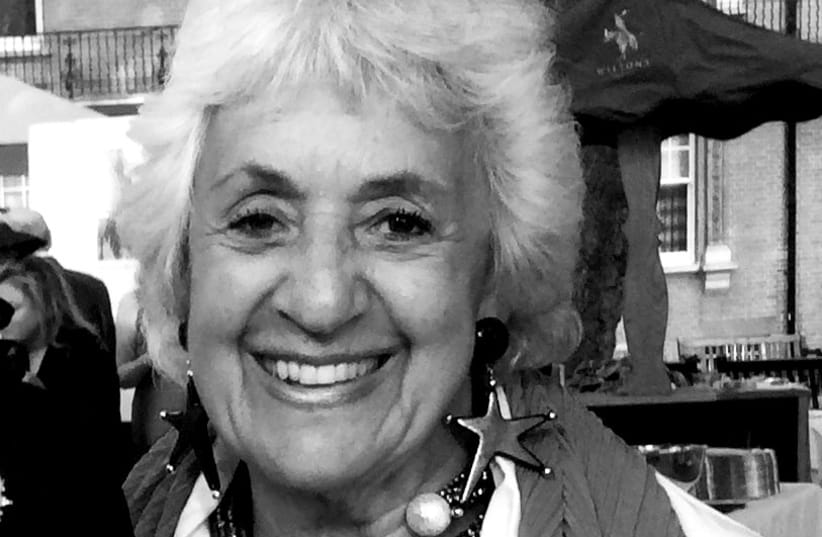
Rifling through the bookshelves in my local charity shop in London, my eyes alighted on a book titled Just One More… by Gemma Levine. Ashamed that I’d never heard of her before, a quick Google search revealed that she’s a photographer, now in her eighties, who has published some 27 books and has exhibited her images extensively worldwide.
She’s had several exhibits in Israel, including at the Jerusalem Theater and Tel Aviv Museum, and her entire archive in Israel is housed at the Israel Museum in Jerusalem. She’s visited Israel on many occasions and has a great affinity for the land.
Her heartfelt photographic images of the country and the people of Israel have been prominently displayed at a prestigious London venue. She’s also produced beautiful large-scale coffee table books on Mayfair in London (where she currently lives) and Claridge’s Hotel.
Having acquired a number of her books, I emailed her inquiring whether she would kindly sign my copies. She responded immediately, overwhelmed by my admiration, wanting to frame my letter and suggesting that we meet at her Mayfair flat. With such an impressive curriculum vitae as hers, I was anxious to find out more about the person behind the lens.
“Chutzpah” isn’t usually a word you would use to describe the requisites of a professional photographer. Expressions such as “an eye for a picture” and “the ability to be in the right place at the right time” come to mind. Levine has all of these and more, but you don’t get to photograph Princess Diana, prime ministers, and doyens of sports, stage and screen by offering them merely your technical ability. It’s not even a matter of who you know. For Levine, it’s always been how can she insinuate herself into a position where the celebrity actually wants to be photographed by her.


The life of a top London photographer
Born in 1939 in North London, Levine attended Hasmonean, an Orthodox Jewish grammar school. There’s something of a parallel between her youthful introduction to photography and my own childhood efforts. We both possessed rudimentary Kodak cameras, and while I took black-and-white summer holiday snaps of beach and windbreakers on the Belgian coast, she was taking color landscape images of the rural London suburbs. She met her husband at Hillel House, part of London University (I knew that well, too), marrying in 1961 at West Hampstead Synagogue. Having already toured Israel at 17 with the Zemel Choir, of which she was a member, she arranged for the choir to sing at the chuppah.
In 1974 she was asked to assist a local photographer at the Royal Albert Hall, where Golda Meir was appearing. Armed with her basic Instamatic, she crawled between the legs of the crowd of photojournalists, securing a couple of images of the former prime minister. One of these photos was published in a daily newspaper, and that springboarded her whole career.
The following year, while on holiday in Israel, she daringly telephoned Moshe Dayan and secured an invitation to his home in Tzahala, completing the photo session with her newly acquired Olympus camera. On showing these photographs to another contact, publisher George Weidenfeld, she was commissioned to return to Israel.
The fruits of many repeat trips over seven years were two books with major personalities. In Moshe Dayan Living with the Bible (1978), Dayan, a keen amateur archaeologist, explores his finds in the context of familiar biblical texts. Israel Faces and Places (also 1978) was prefaced by Golda Meir, following Levine’s spontaneous request. At her Rehavia home, Meir served her tea and home-baked fairy cakes. Although Meir was ill, Levine wanted her to be the first to see the published book and took it to her hospital bedside. Meir died two months later. Levine also collaborated with Yehuda Avner (one of Golda Meir’s speech writers) in The Young Inheritors (1982), a moving portrait of Israel’s younger generation.
In 1976, having heard about British sculptor Henry Moore from a friend, she wrote to him on impulse, hoping to learn from him about art. She estimated it would take about a week to complete her photographic assignment.
In the event, her three books on Moore were published over a period of almost 10 years. From him she learned about definition and shadows, light and shade, and also the ability to become “part of the furniture,” blending in with her subject, all of which served her well throughout her long career. It was Moore who coined the epithet Gemmalevine (all one word), thinking it was her first name.
Now a well-established worldwide photographer of major celebrities, Levine has produced a number of portrait books, such as Faces of the ’80s and People of the ’90s. She also negotiated extended access to the famous Claridge’s Hotel in London for Claridge’s – Within the Image (2004). Here again, chutzpah magic came to the fore. Without anywhere to live while her newly acquired next-door apartment was being refurbished, she offered herself to Claridge’s as “photographer in residence” in exchange for bed and breakfast. She was given a luxury suite and spent some months photographing the hotel staff and guests.
Throughout her professional career, Levine has donated the proceeds of the majority of her books to charitable causes: Faces of the ’80s for the Sharon Allen Leukaemia Trust (Sharon was a nine-year-old girl with leukaemia); People of the ’90s for the Malcom Sargent Cancer Fund for Children; and Memories (1998) for the Alzheimer’s Disease Society. She has staged concerts and launched charity campaigns for many other worthy charities.
In 2010, Levine was diagnosed with breast cancer and subsequently with lymphoedema, which has somewhat impaired her ability to deal with the logistics of taking photographs.
She has, nevertheless, continued to publish, writing on her cancer experience (Go with the Flow, 2012) and, with a medical expert, the definitive guide to lymphoedema (Let’s Talk Lymphoedema, 2017), offering advice and support for sufferers. Bringing it all together is Golden Threads (2022), with proceeds to Lymphoedema Research, in which she shares the emotions and memories of her interaction with the many well-known people who have sat at the other end of her lens. In May of this year, she is arranging a huge fundraiser for lymphoedema at Claridge’s, with the hotel and also a number of celebrities volunteering their services to the cause.
I came away, intoxicated that I had met an exceptional talent. Not only that, but Levine is as kind and generous a person as you could hope to meet. It’s refreshing to know that in this sometimes impersonal world in which we live, there are people out there who really care. ■
If you would like to make a donation to Gemma Levine’s charity, the Lymphoedema Research Fund, the bank account is St. George’s Hospital Charity; Bank: Natwest; Sort Code: 60 14 31; Account: 64136574.